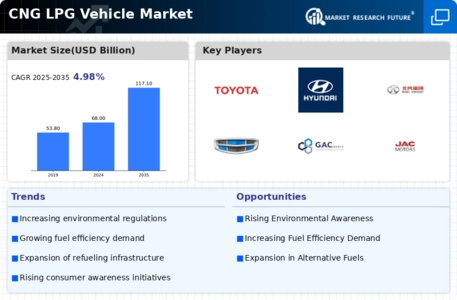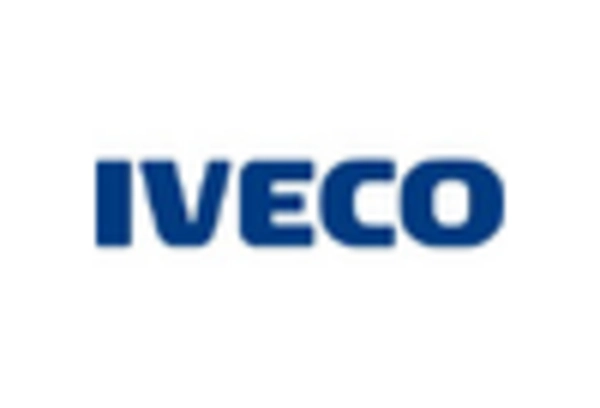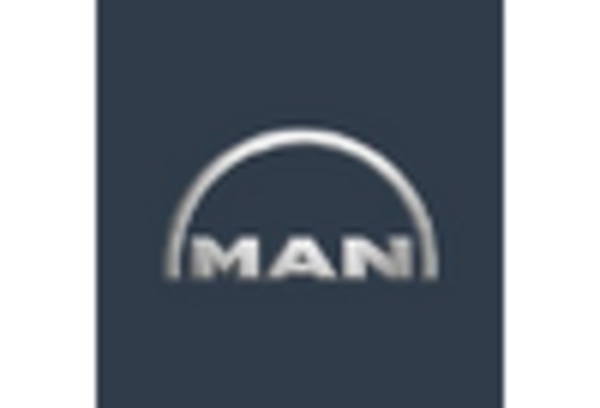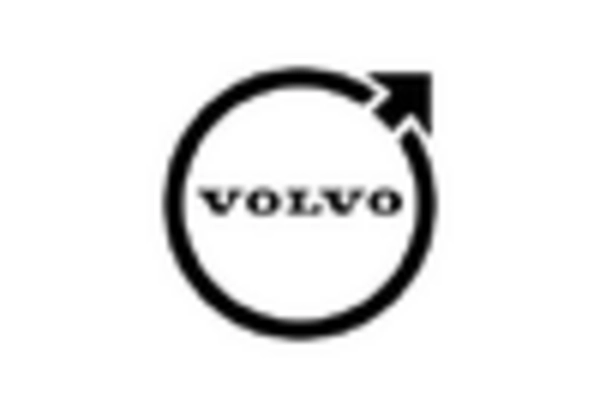Market Growth Projections
The Global CNG LPG Vehicle Market Industry is poised for substantial growth in the coming years. Projections indicate that the market will reach 68.0 USD Billion by 2024 and is expected to expand to 117.1 USD Billion by 2035. This growth trajectory suggests a compound annual growth rate of 5.06% from 2025 to 2035, reflecting the increasing adoption of CNG and LPG vehicles across various regions. The market's expansion is likely to be driven by a combination of environmental policies, economic incentives, and technological advancements.
Growing Environmental Concerns
The increasing awareness regarding environmental degradation and climate change is driving the Global CNG LPG Vehicle Market Industry. Governments worldwide are implementing stringent regulations to reduce greenhouse gas emissions, which encourages the adoption of cleaner fuel alternatives like CNG and LPG. For instance, countries in Europe and Asia are promoting the use of these vehicles through subsidies and tax incentives. This shift is expected to contribute to the market's growth, with projections indicating that the Global CNG LPG Vehicle Market could reach 68.0 USD Billion by 2024, reflecting a significant transition towards sustainable transportation.
Economic Benefits of CNG and LPG
The economic advantages associated with CNG and LPG vehicles are becoming increasingly apparent, thereby propelling the Global CNG LPG Vehicle Market Industry. These vehicles typically offer lower fuel costs compared to traditional gasoline and diesel options, which can lead to substantial savings for consumers and businesses alike. Additionally, the price volatility of crude oil makes CNG and LPG more attractive as stable alternatives. As a result, the market is anticipated to grow, with an expected value of 117.1 USD Billion by 2035, highlighting the financial incentives driving consumer choices.
Government Initiatives and Incentives
Government initiatives play a crucial role in shaping the Global CNG LPG Vehicle Market Industry. Many governments are actively promoting the adoption of CNG and LPG vehicles through various incentives, such as tax breaks, grants, and infrastructure development for refueling stations. For example, countries like India and Brazil have launched programs to increase the availability of CNG and LPG fueling stations, thereby enhancing accessibility for consumers. These initiatives are likely to stimulate market growth, contributing to a projected compound annual growth rate of 5.06% from 2025 to 2035.
Technological Advancements in Vehicle Design
Technological advancements in vehicle design and engine efficiency are significantly influencing the Global CNG LPG Vehicle Market Industry. Innovations in engine technology, such as improved combustion processes and enhanced fuel injection systems, are making CNG and LPG vehicles more efficient and appealing to consumers. Furthermore, the development of hybrid models that utilize both traditional fuels and CNG or LPG is expanding the market's reach. As these technologies continue to evolve, they are expected to attract more consumers, thereby supporting the market's growth trajectory.
Increasing Urbanization and Transportation Needs
The rapid pace of urbanization is creating a heightened demand for efficient and sustainable transportation solutions, which is beneficial for the Global CNG LPG Vehicle Market Industry. As urban populations grow, the need for cleaner vehicles to reduce air pollution becomes more pressing. CNG and LPG vehicles are often seen as viable solutions to meet these demands, particularly in densely populated areas. This trend is likely to drive market expansion, as cities implement policies to promote cleaner transportation options, further solidifying the role of CNG and LPG vehicles in urban mobility.

















Leave a Comment